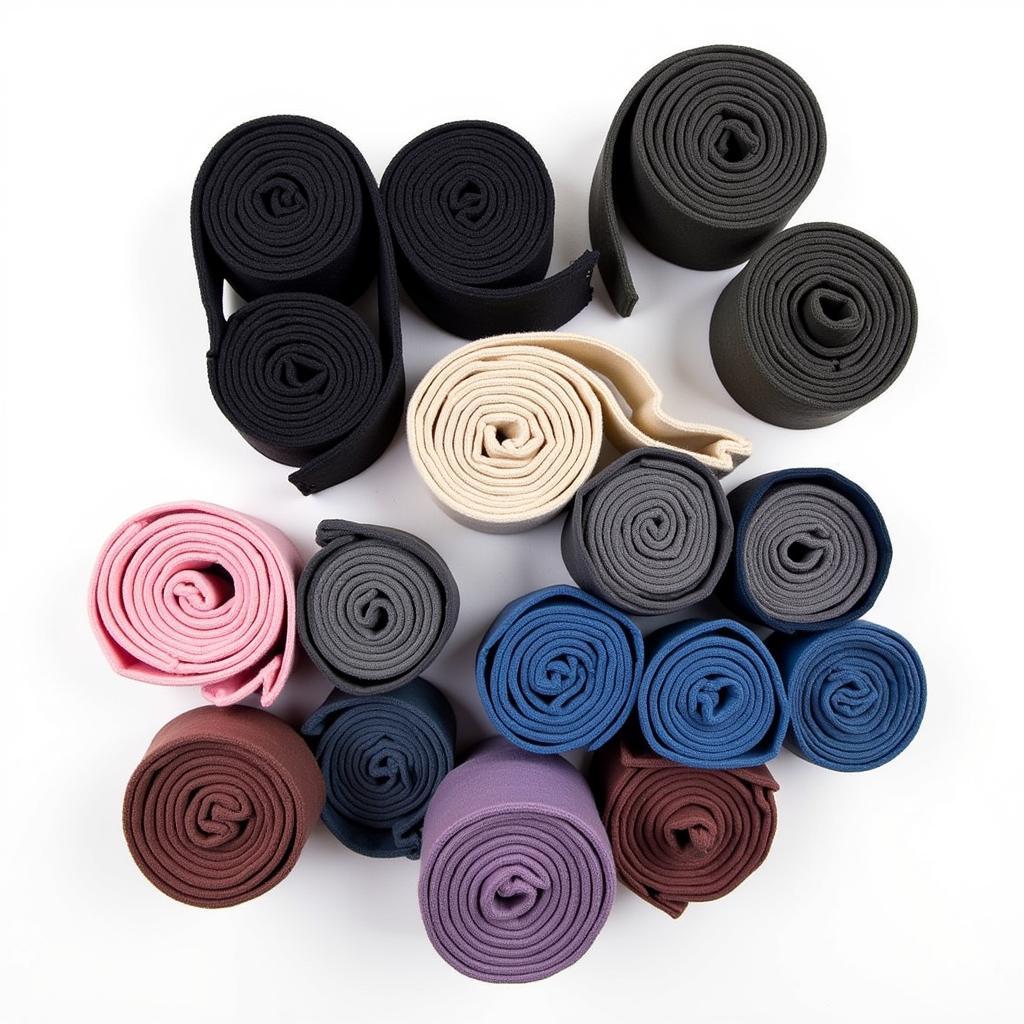A Tail Wrap Horse is a protective covering used on a horse’s tail to prevent breakage, tangling, and rubbing. It’s a common tool used by horse owners, especially during transport, showing, and stabling. Choosing and applying a tail wrap correctly is crucial for maintaining the health and beauty of your horse’s tail.
Why Use a Tail Wrap Horse?
Tail wraps serve several important purposes. They protect the tail from damage during transport, preventing it from being rubbed or pulled. They also help keep the tail clean and tangle-free, especially for horses with long, thick tails. For horses preparing for shows, a tail wrap can help keep the tail neat and presentable.
Using a tail wrap horse can also be beneficial for horses who are prone to chewing or rubbing their tails, preventing further damage and promoting hair growth. tail wraps for horses are available in a variety of materials, each with its own benefits and drawbacks.
Choosing the Right Tail Wrap Horse
There are numerous types of tail wraps available, ranging from simple cotton wraps to more sophisticated knitted or lycra options. When choosing a tail wrap horse, consider factors such as the horse’s activity, the climate, and the length of time the wrap will be worn.
What are the Different Types of Tail Wraps?
- Cotton: These are inexpensive and breathable, making them a good choice for everyday use.
- Knitted: These offer good protection and are often used for transporting horses.
- Lycra: These are stretchy and conforming, ideal for showing or keeping the tail neat.
- Quilted: These offer extra padding and protection, suitable for horses with sensitive tails.
Selecting the right tail wrap is essential for both comfort and effectiveness.  Various types of tail wraps for horses
Various types of tail wraps for horses
How to Apply a Tail Wrap Horse Correctly
Proper application is key to ensuring the tail wrap horse is effective and doesn’t cause discomfort. A poorly applied wrap can restrict blood flow or damage the tail hair.
Steps to Apply a Tail Wrap:
- Gently brush the tail to remove any knots or tangles.
- Fold the tail wrap in half lengthwise.
- Place the folded edge of the wrap at the top of the tail dock.
- Begin wrapping the tail smoothly and evenly, overlapping each layer slightly.
- Avoid wrapping too tightly, which can restrict blood flow.
- Secure the wrap with the attached Velcro or ties.
- Ensure the wrap is not so loose that it can slip down or unravel.
tail wrap for horses should be applied carefully and checked regularly to ensure they are secure and not causing any discomfort or damage.
Tail Wrap Horse Care and Maintenance
Proper care and maintenance will prolong the life of your tail wraps and ensure they remain hygienic. Regularly wash tail wraps according to the manufacturer’s instructions. Allow them to air dry completely before storing them in a clean, dry place.
How Often Should You Wash a Tail Wrap?
Ideally, tail wraps should be washed after each use, especially if they have become soiled or sweaty.
“Regularly inspecting and cleaning your horse’s tail wrap is vital for maintaining hygiene and preventing skin irritations,” advises Dr. Emily Carter, DVM, specializing in equine health and wellness. “A clean tail wrap contributes significantly to a healthy and comfortable horse.”
Tail Wrap Horse: Common Mistakes to Avoid
- Wrapping too tightly, restricting blood flow.
- Using a dirty or damaged wrap.
- Leaving the wrap on for extended periods without checking.
- Not properly securing the wrap, allowing it to slip or unravel.
“Avoid wrapping the tail too tight,” cautions Dr. Carter. “A properly applied tail wrap should be snug but not constricting.”
Conclusion
A tail wrap horse is a valuable tool for protecting and maintaining the health and appearance of your horse’s tail. By choosing the right type of wrap and applying it correctly, you can ensure your horse’s comfort and well-being. best products for horse tail growth can be used in conjunction with tail wraps to further promote a healthy and luxurious tail. Remember to regularly check the wrap for proper fit and cleanliness.
FAQ
- How long can I leave a tail wrap on my horse?
- What are the signs of a too-tight tail wrap?
- Can I use a tail wrap on a horse with a sensitive skin?
- What is the best material for a tail wrap?
- How do I clean a tail wrap?
- Can a tail wrap help with tail growth?
- When should I use a tail wrap?
Common Scenarios and Questions:
-
Scenario: Your horse’s tail is constantly getting tangled and dirty in the pasture. Question: Which type of tail wrap is best for everyday use in the pasture?
-
Scenario: You’re transporting your horse to a show. Question: What type of tail wrap is most suitable for transportation?
Further Reading
You can also find more information on horse first aid and Christmas ornaments on our website:
Need further assistance? Contact us! Phone: 0772127271, Email: [email protected] or visit us at QGM2+WX2, Vị Trung, Vị Thuỷ, Hậu Giang, Việt Nam. We have a 24/7 customer service team.